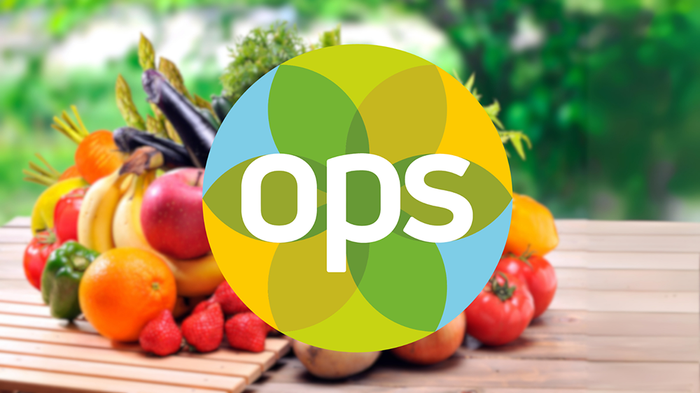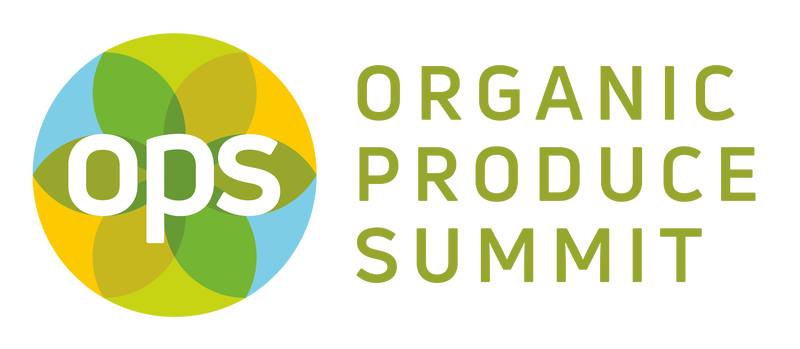In Their Words: Eric Schwartz
May 3, 2018
.jpg?width=1280&auto=webp&quality=95&format=jpg&disable=upscale)
OPN connected with newly appointed National Organic Standards Board Member Eric Schwartz. On April 25th, U.S. Department of Agriculture announced two new members appointed to National Organic Standards Board (NOSB). Eric Schwartz, United Vegetable Growers Cooperative CEO, was appointed to the open organic handling seat.

Eric Schwartz, newly appointed National Organic Standards Board Member
OPN Connect: Eric, you’ve served many years in fresh produce. Please tell our readers your history and how it will benefit NOSB’s work.
Eric Schwartz: After nine years at Kraft Foods, I was recruited by Dole when packaged salad was taking off. I left the industry after a few years to return to the East Coast, but Dole won me back. What first attracted my return to the fresh produce industry was the uniqueness of every day. You can do everything right from an operations standpoint, from planting to processing, then two days before harvest, Mother Nature can throw a curve. You might harvest on time, but weather can change shelf life considerably.
I experienced the explosive growth of packaged salad in the early 1990s, and organic salad growth that followed. Packaged salads were around since 1970s, but mostly in hand -packed food service. By early 1990s, when packaging film became machineable, along with predictable oxygen transmission rates, mass production was economical.
I’ve served as president of Dole Fresh Vegetables and Salyer American Fresh, and CEO of Patterson Vegetable Company and United Vegetable Growers Cooperative—my current role. UVGC is the largest leafy greens cooperative on the West Coast. Our members represent almost 70% of the organic leafy greens ground base.
In early days at Dole, I was in operations, including with early Earthbound Farms’ plant expansions.
Earthbound co-packed organic salads for Dole, which provided design and operational support. Organic salads took off fast. Soon they were almost 15% of Dole’s packaged salads volume.
In frozen foods, 12-18 month shelf life is common. For fresh produce, shelf life is measured in days. Fresh presents a different set of challenges, and organic brings additional complexity.
Organic is finally becoming mainstream, but field yield for organics is significantly behind conventional. Organic is at an inflection point—how to get it to the next generation of consumers, available and affordable to the masses. If conventional bagged salad is $1.99 and organic is $3.99, that limits many people.
In this industry, you make things happen quickly and think on your feet. You can’t cut corners.
We have unique challenges in fresh produce. We can’t use heat or caustic in processing plants. Organic doesn’t have the depth of processing aids of conventional.
I’m sensitive to the sunset process. If we want to move something off the list, and it’s as critical as chlorine or copper, we must have something viable to replace it.
Until about 8 months ago, I didn’t consider getting directly involved in NOSB. However, I realized how little the growing side understands the ramifications of NOSB meetings.
We all, farmers especially, have a lot on our plates. I don’t have an answer yet about lack of participation regarding NOSB’s recommendations to USDA, but that’s front and center for me. I want to figure out how to better communicate with organic growers, so they understand what the process is and how lack of participation can hurt them.
OPN Connect: What motivated you to apply for a NOSB seat? Were you encouraged by industry?
ES: I couldn’t serve on NOSB without the support of UVGC members; it’s a big time commitment. As I watched meetings on hydroponics, chlorine, and copper, I realized the industry and NOSB are at an inflection point.
When standards were written, they couldn’t predict and didn’t account for later technological and scientific advances.
Taking an extremely important processing or farming aid like chlorine or seed treatment off the list does require a viable replacement! In 2004 it was recommended that spinach seed treatment end. The decision made sense on one side, but it’s been devastating on growers. When seed treatment stopped, disease mutations exploded. At that time we knew of four races of downy mildew. Today, 17, and many experts say well over 20. I’d like NOSB to revisit decisions when resolving one issue results in a bigger challenge.
Organic is to protect soil and environment. That’s not happening if you’re discing 15% of a crop. It’s not unusual for a grower to plant 15 % more than they need; that isn’t sustainable, it’s wasted input.
Count disced acres when measuring overall sustainability, not just acres harvested or shipped. We kid ourselves by not looking at the entire growing chain.
Compared to conventional, tools available to organic farmers are limited; that makes them extremely important. We’re using the same fungicides and herbicides basically developed in the 1960s and 1970s. But plant diseases haven’t stood still. When organic farmers say they’re spraying four, five, six times and aren’t getting results, listen.
Part of NOSB’s challenge is to be open to appropriately removing roadblocks. As science and technology offer answers, make sure they’re fully vetted, then accessible. Don’t delay vetted improvements.
Organic research dollars haven’t kept pace with the growth of the industry. NOSB’s charge is not to protect organic farmers’ livelihoods—that’s ultimately up to consumers. But NOSB must ensure tools, information, and research allocations foster success.
OPN Connect: Larger western produce growers were underrepresented lately on NOSB. What perspective will you bring as a California professional?
ES: There’s no question I’m somewhat biased; western produce is responsible for much organic fruit and vegetables grown in the U.S.
There’s no real mechanized farming represented on NOSB; I want to bring that modern view. Technology isn’t evil. Mechanized farming isn’t either. Earth will need to feed 9 billion people in the next 30 years. As things have progressed to date, organics won’t get a fair share in terms of field yields and plant-disease protection. We must accelerate, not slow.
OPN Connect: What challenges do you hope to address in a five-year NOSB term?
ES: The biggest opportunity is finding ways to have organic yields at parity with conventional. That’s not NOSB’s charge, but NOSB can expedite getting there—not put up roadblocks.
Over 60 % of U.S.-born children qualify for USDA’s WIC; those families can’t afford $3.99 salad. Likewise, 35 million children are in USDA’s National School Lunch Program. That’s a large portion of the consumer base, and it must be included in discussions about growing the organic category. Fresh produce isn’t even a requirement of government subsidy, let alone organic.
Another motivation to serve on NOSB is protecting the USDA Organic seal’s integrity. Importing problems are all over the news. It’s a minute portion of what’s imported, but a media focus. Consumers get the impression no controls are in place.
Ninety-nine percent of organic growers do the right thing, but it’s basically “scout’s honor.” A $50B industry is too big for that. We’re often dependent on investigations by very resource-constrained local agencies.
The last thing industry needs is another government layer to attempt policing the dishonorable 1%. Instead, private sector has great ideas on monitoring, faster and more economically. Leafy Greens Marketing Agreement in California is an example of private sector mobilizing to effectively address an issue. I want to encourage such private sector leadership.
The perception of organics runs at the speed of social media bombardments. Consumers remember the last thing done wrong. USDA Organic’s seal must inspire confidence. Consumers shouldn’t have to think twice—“Is this organic, and if so, what does that seal really mean?” Let’s make sure seal integrity speaks strongly for itself, so rare violations don’t overshadow our integrity.
OPN Connect: What opportunities do you see for organic in the next 5-10 years?
ES: Baby Boomers increased organics. Millennials question organic yields and carbon footprint. Many live paycheck to paycheck and won’t pay $3.99 for lettuce.
To further the mainstreaming of organic, it must become more accessible. Policy will have a significant impact on growth. Research dollars are critical. Just 200K acres in organics won’t deliver research money that 2M acres of corn or soybeans might. Organic Agriculture Research Act that Representative Jimmy Panetta (D-CA) helped introduce is a great start. Let’s help get it passed.
We must get more involved with National School Lunch Programs. Besides organic food’s benefits for those 35-million children, it’s an opportunity to familiarize next-generation buyers with organics.
On California’s Central Coast alone, there are over 400 organic growers. It’s a fragmented industry, and we don’t have critical mass regarding research allocations. We’ll need help with research and education.
The best way to increase organic yields on the vegetable side is deal with pathogens. Baby spinach accounts for over 50% of $1B organic salads. Consider 15% plowed under annually. That’s a lot of seed, water, and labor wasted, not to mention sprays.
OPN Connect: How will your NOSB work advance these opportunities?
ES: I don’t make recommendations in a vacuum, and I consider indirect consequences. In produce, things rarely happen in isolated steps. A decision about seed variety can impact harvest, efficiency at plants, and so on.
I’m a believer in organic. I want to be sure the industry is true to itself and the soil. If our carbon footprint is higher than conventional, address it. If we must spray more fungicides or herbicides because what’s allowed doesn’t work, address that. We can’t fix a problem we don’t acknowledge.
Besides money for scientific and other research, we need an open mind. We need to find a balance between protecting organic standards as they were originally written and addressing problems not envisioned back then.

